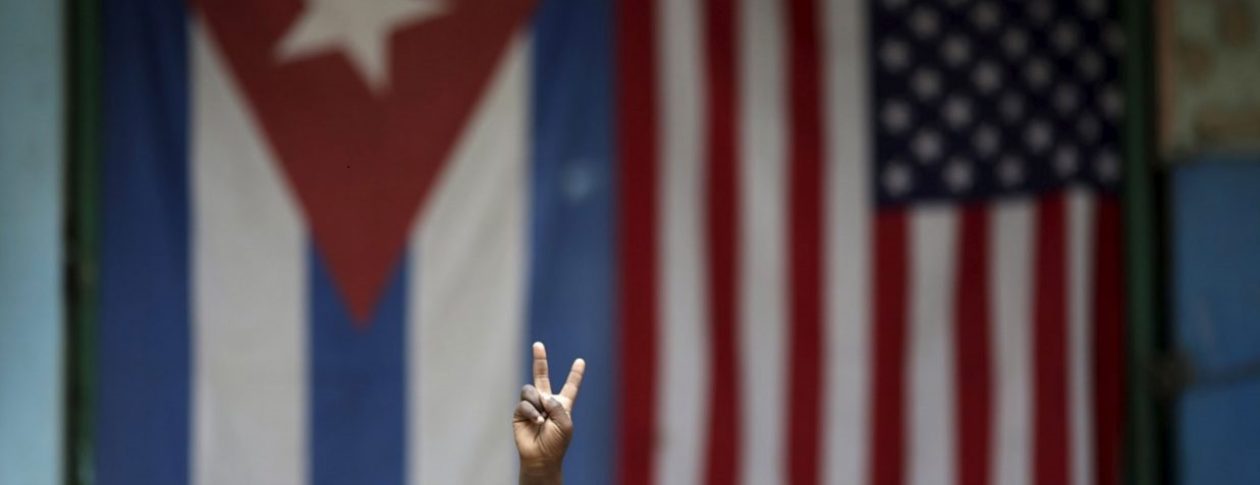
“A Peronist agitator of Cuban origin”. This is how the CIA described Fidel, according to journalist Rogelio García Lupo (from Prensa Latina) in his book Últimas noticias de Fidel Castro y el Che (2007).
A young Fidel, 21 years old, went to Bogota as a representative of the University Student Federation of Cuba to the counter-summit that was the Pan American Conference, a tool of the Empire, which from that year on would be replaced by the OAS. On that April 9, Fidel expected to meet with the leader Jorge Eliécer Gaitán, but he was assassinated at noon. The Bogotazo took place, and although Fidel was not Colombian, he was there, at the side of the people.
According to García Lupo, Fidel “saved his life in a Cadillac protected by an Argentine flag stretched over the roof and with the diplomatic plates clearly visible”. Hence the hasty and fallacious conclusion of the Yankee spies. He was not Argentine, but that CIA document shows the Latin American patriot character of the man who, ten years later, would lead the necessary war.
In 1947, Fidel had been involved in the failed Expedition of Cayo Confites, integrated by Cubans and Dominicans, and whose objective was to free the Dominican Republic from the dictatorship of Rafael Trujillo. He was not Dominican, but at the age of 20 he had already made his internationalism clear.
Then came the Moncada barracks attack, the imprisonment and a stay in Mexico, to gain momentum and return to the struggle. There, in June 1955, he would meet Ernesto Guevara, an Argentine doctor introduced to him by Raul at Maria Antonia’s home, a Cuban exiled in Mexico City.
With the help of El Cuate, they would get the Granma yacht and the necessary weapons, and another Mexican named Arsacio Vanegas would train them. Fidel was not Mexican, but while eating tortillas he made that sentence: “If I go out, I arrive. If I arrive, I enter. If I enter, I triumph”. The conviction of reason… and of the human spirit.
He was not Puerto Rican either, but he was very clear that Cuba and Puerto Rico are the two wings of a bird. On one occasion he clarified: “Cuba’s solidarity with Puerto Rico comes from history, from Martí and from our internationalist principles”.
Fidel was not Nicaraguan, but without his help, who knows if the Sandinista revolution would have happened. In 1961 Carlos Fonseca, Germán Pomares and Tomás Borge traveled to Havana, and in Cuba the seed was sown that two years later germinated as the FSLN. But on one occasion, Fidel warned them: “You have to make your own revolution, you cannot imitate ours”. And so it was.
He was neither Soviet, nor Vietnamese, nor Yugoslavian, nor Chinese, but he always understood which side to be on in times of Cold War, against the Empire. And that strategic clarity is one of his most lucid legacies for us in these times of geopolitical reconfiguration.
Fidel was not African, but he became a symbol of post-colonialism, because the wave of decolonization in Africa matched exactly with the definitive independence of Cuba. Hundreds of thousands of Cubans went to Africa to help in that post-colonial period and the most decisive action, undoubtedly, was in Angola. The battle of Cuito Cuanavale liberated three countries, because it put an end to the reaction in Angola and initiated the end of the apartheid regime in South Africa, which in turn determined the independence of Namibia.
He was from nowhere else but Biran… and Santiago, and Havana, and Pinar del Rio, and every corner of Cuba. But Fidel was and is also from humanity.
